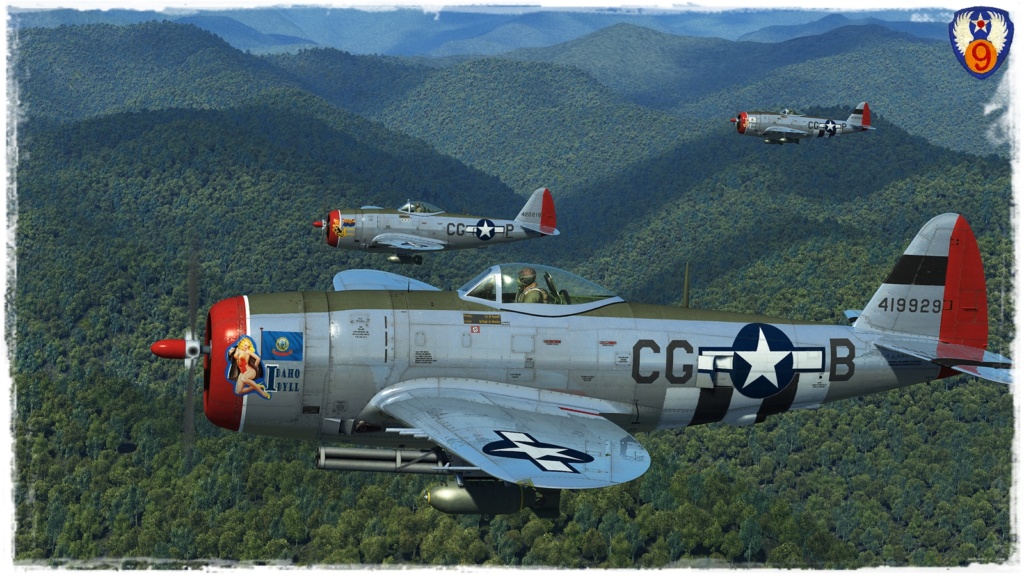Curtiss P-40E : Doc et infos
+2
Obelix
Filanciu
6 participants
Cercle de Combat Gaulois :: Simulation aérienne :: Cercle de Combat Gaulois - BOS :: Info Fiches Avions
Page 1 sur 5
Page 1 sur 5 • 1, 2, 3, 4, 5 
 Curtiss P-40E : Doc et infos
Curtiss P-40E : Doc et infos

Thread consacré au Curtiss P-40, doc, vidéos, manuels, info etc...
https://www.dailymotion.com/video/x2fi7d7_2e-guerre-mondiale-le-chasseur-curtiss-p-40-warhawk_tech
nostalgie :D :D :D :D :D :D :D :D
avec obe on l attend celui la .................................................
![;-]](/users/3317/26/76/51/smiles/450028588.gif)
![;-]](/users/3317/26/76/51/smiles/450028588.gif)

Filanciu- Kombrig

- Messages : 366
Date d'inscription : 12/01/2013
 Curtiss P-40E : Doc et infos
Curtiss P-40E : Doc et infos
http://aviationshoppe.com/manuals/p40_pilot_training/p-40.html
ce manuel viens du site de JP DORE
une veritable mine d or depuis sa creation pour IL 2 1946 :D :D :D :D
http://www.derrierloisirs.fr/il2/bdd2012/
obe et moi on est pret a receptionner le P 40 :D :D :D :D :D :D
ce manuel viens du site de JP DORE
une veritable mine d or depuis sa creation pour IL 2 1946 :D :D :D :D
http://www.derrierloisirs.fr/il2/bdd2012/
obe et moi on est pret a receptionner le P 40 :D :D :D :D :D :D
Dernière édition par Filanciu le Dim 26 Juil 2015, 11:46 am, édité 1 fois

Filanciu- Kombrig

- Messages : 366
Date d'inscription : 12/01/2013
 Re: Curtiss P-40E : Doc et infos
Re: Curtiss P-40E : Doc et infos
J'ai lu toute la doc mise en ligne (manuels de vol), et j'ai hâte de mettre mon auguste postérieur dans la barquette du P-40

Obelix- Livreur de Menhir

- Messages : 2711
Date d'inscription : 07/11/2012
Age : 59
Localisation : un ch'tit village, près d'une forêt, et entouré de forts romains
 Re: Curtiss P-40E : Doc et infos
Re: Curtiss P-40E : Doc et infos

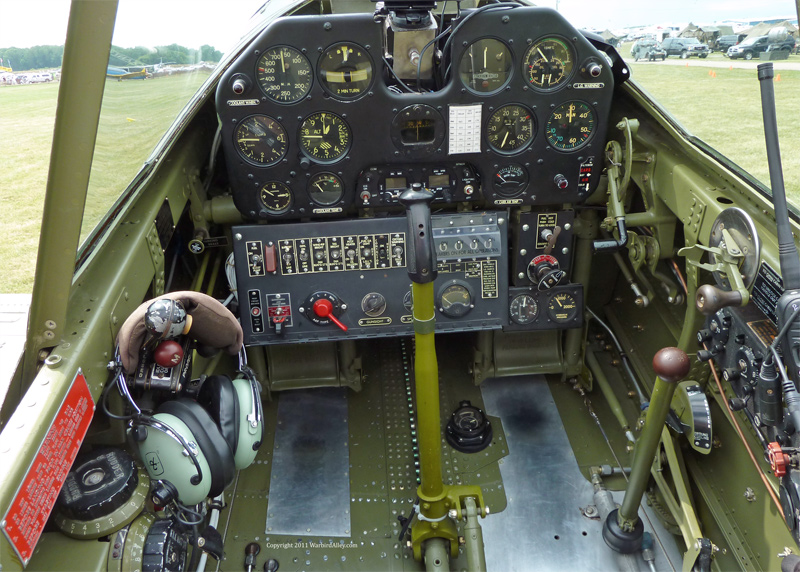
Quelques liens :
http://www.aero-web.org/locator/manufact/curtiss/p-40.htm
http://www.flyingtigersavg.com/
Check list pour P40N
P40 aux couleurs de l'URSS
P40 soviétiques
http://www.warbirdregistry.org/p40registry/p40registry.html
Dernière édition par Obelix le Jeu 06 Aoû 2015, 3:32 pm, édité 2 fois

Obelix- Livreur de Menhir

- Messages : 2711
Date d'inscription : 07/11/2012
Age : 59
Localisation : un ch'tit village, près d'une forêt, et entouré de forts romains
 Re: Curtiss P-40E : Doc et infos
Re: Curtiss P-40E : Doc et infos
Comment s'y reconnaitre dans tout ce fatras de versions:
How Good is Good Enough?
The P-40 was the last and best known of Curtiss Hawk series fighters initiated in the 1920s. It's qualities were, and are, controversial.Criticised by many for poor manoeuvrability, low speed and rate of climb, it was on a verge of being obsolescent already before series production started. The inadequacies of the P-40 were widely publicised in the initial war years and even became the subject of a Congressional investigation.
Still, the P-40 was used successfully by many Air Forces during the war. One of the first customers was RAF, where the fighter named Kittyhawk distinguished itself in the African and Italian campaigns. It also did pretty well in USAAF service during the first year of Japanese advance in the Pacific, when little else (namely the P-39 Airacobra) was available in quantity. Popularised as the aircraft used by the Flying Tigers (American Volunteer Group) in China, it also helped to produce one of the first morale-boosting 'success stories' of the American Air Force in the war against Japan. It is with this unit that the P-40 achieved immortal fame.
Another large user of the P-40 was the Soviet VVS. Interestingly, although favoured by USSR pilots, Josef Stalin himself opted for Bell P-39 over P-40 as "more suited for combat against German fighters." On what grounds his opinion was based remains a mystery.
The P-40 had no serious vices and was a pleasant aircraft to fly. When flown by an experienced pilot was able to give a good account of itself in aerial combat. It's indisputable advantage was also very tough construction, which made the aircraft capable of bringing it's pilot home despite sometimes heavy damage.
Contrary to it's opinion of a stop-gap measure, the production of P-40 continued long after more modern types were readily available. The total number of P-40 manufactured reached the third highest total for American World War II fighters, bettered only by the Republic P-47 Thunderbolt and the North American P-51 Mustang. These production numbers can be deemed the ultimate measure of the aircraft's usefulness.
A Quick Guide to P-40 Variants
Unsurprisingly for the massive production of almost 14,000 aircraft, the P-40 went through many changes during it's life. Little resemblance can be found between last production variants and the original concept. This guide is intended to help identifying the production versions and spot the major differences between them.
XP-40 Prototype - The P-40s immediate ancestor was Curtiss P-36 (Model 75), a radial engine-powered fighter later flown by the French Air Force against Luftwaffe in 1940. The P-36 design was reworked to incorporate the liquid-cooled Allison V-1710 engine equipped with a supercharger, resulting in the XP-37. Thirteen YP-37 service-test aircraft were built, but major problems with the supercharger installation caused the development of the P-37 to be abandoned in favour of a less complex installation of the Allison V-1710 engine. Tenth production P-36A was converted to the new prototype. This project was given the designation Curtiss Model 75P, and the USAAC gave the project a new fighter designation, XP-40. The prototype first flew on October 14, 1938. It went through several modifications, several different positions and configurations of oil cooler had been tried affecting the aircraft's silhouette.
To make a very long story short, here's the list of major production variants:
P-40 - the original production version to USAAC specification. The armament was limited to two 0.50" machine guns located in the fuselage. The engine was V-1710-33. The first machine left the factory in May 1940. The model differed from the XP-40 prototype by having flush-riveted surface instead of drag-inducing conical rivets used in P-36. Following the new USAAC designation, Curtiss gave it's new fighter the internal designation H-81 (Curtiss Hawk Model 81).
A first production version P-40 can be recognised by armament concentrated solely above the engine. Wing-mounted guns would be introduced in all subsequent versions.
H-81A - export version for the Armée de l'Air, of which 140 were ordered. The first production machine flew in June 1940, too late to enter the French service. The contract was overtaken by RAF after the fall of France.
Tomahawk Mk. I - In the British service the "French" aircraft were named Tomahawk Mk. I. The machines were identical to the P-40, except for the instruments and equipment. Even the armament was improved with four wing-mounded machine guns. The first Tomahawks reached England in September 1940.
This is Tomahawk Mk. I, modified to the RAF specification with four wing-mounted 0.303" Brownings. Installation of British radio equipment resulted in a radio mast halfway down the rear fuselage.
P-40B - differed from the P-40 by improved armament obtained by two extra 0.30" machine guns in the wings. Heavier weight coupled with the same engine resulted in performance inferior to that of the P-40. Ca. 130 were produced, deliveries starting from March 1941.
Tomahawk Mk. IIA - was the export version of the P-40B for the RAF. The wing guns were replaced by two 0.303" calibre Brownings, and British radio was installed. It also had armour protection for the pilot and first version of self-sealing fuel tanks. 110 were produced, 23 of which were sent to the Soviet Union.
P-40C - Delivered from April 1941, 193 were manufactured. Improved fuel system allowed for a drop fuel tank below the fuselage. Self-sealing tanks were introduced with this model, and the armament was yet increased to four 0.30" wing-mounted machine guns and two 0.50"s in the fuselage. More gain in weight caused the performance to be even worse than that of P-40B.
Tomahawk Mk. IIB - export equivalent of the P-40C. 930 were built. 100 of these planes were transferred to China for the "Flying Tigers", and 195 were sent to Russia. Mk. IIB was also extensively used by RAF and SAAF in Africa - as much as sixteen squadrons were equipped with the type. Armament was again increased to four (some sources state six) wing-mounted 0.303" guns in addition to two 0.50" guns in the fuselage. The US radio equipment was retained on this model.
This excellent period photograph shows a flight of "Flying Tigers" Tomahawk Mk. IIBs in flight over China. Various sources refer to AVG machines as being P-40Bs or P-40Cs, but they were actually produced for British contract to Tomahawk Mk. IIB standard. The first machine is flown by Charles Older, AVG. It appears to have only two wing machine guns mounted.
P-40D - delivered from May 1941. The engine was finally upgraded to V-1710-39, which produced more power and had better high altitude performance. The engine was now 18 inches shorter, and the prop thrust line 8 inches higher. The airframe adaptation was therefore extensive, and prompted a new internal Curtiss designation of Model 87. The aircraft received an entirely new fuselage with shorter nose, enlarged chin intake and sleeker cross-section that we today associate with the P-40. The fuselage guns were deleted, four 0.50" guns being installed in the wings. Armour protection was improved, and wing hardpoints introduced to carry bombs.
Only 22 Ds were produced before the order was changed to accommodate six guns. Curtiss promptly responded to this request, but the modified aircraft received the designation P-40E.
P-40E - as stated above, it was identical to the D-version except for six wing-mounted machine guns.
The completely redesigned nose accommodating the Allison V-1710-39 can be seen in detail on this photo, which the author believes to show one of the AVG P-40Es. "Flying Tigers" received their first Es in March 1942, after the lack of spare parts and combat attrition reduced the unit's strength to only 20 flyable P-40Cs.
Kittyhawk Mk. I - even the British recognised the new-generation P-40 as an entirely new aircraft, designating it Kittyhawk.
These early series P-40Fs show the airframe generally similar to that of P-40E with shot rear fuselage.
The first 20 were delivered to P-40D specifications, remaining ones being identical to P-40Es with exception of British equipment such as radio installation. The designation Kittyhawk Mk. IA was used for the latter to distinguish between these two variants. An aircraft of this batch, NZ3009, is a photographic subject of the In Detail article in this issue. Totally Britain received ca. 1500 Mk. Is.
The American designation P-40E-1 was adopted to identify the 1500 Kittyhawk Mk. IAs shipped to Britain early in the Lend-Lease program to distinguish their British equipment from those in the US service. Many were actually retained for US service, identifiable by their British-style camouflage.
P-40F - In USAF service the type received the name Warhawk. The engine was exchanged once more, this time to he vastly superior Roll-Royce Merlin 28 (later Packard Merlin V-1650-1) with a single-stage supercharger built into the P-40D airframe . With the new engine the carburettor air intake on top of the cowling was removed.
The first 699 production aircraft were designated only P-40F, after which the subtype numbers were introduced to keep track of modification introduced directly in production. The "dash numbers" were assigned according to the system: -1, -5, -10, -15, -20 and so on, with interval of 5. Thus the first P-40Fs were retroactively treated as P-40F-1, and subsequent modifications were designated P-40F-5, P-40F-10, P-40F-15, P-40F-20. Actually the official designations carried an additional suffix -CU indicating Curtiss production facilities, like P-40F-10-CU, but we'll omit it here for clarity.
The P-40F-5 and later production models had the rear fuselage lengthened with over 2 feet to improve directional stability. Of note is that only fin and rudder were moved back, the horizontal tailplane remained in the same position.
113601 was the second production P-40F. The most prominent feature of the Merlin-powered Warhawks was lack of carburettor air scoop on top of the cowling.
Kittyhawk Mk. II - of over 1300 P-40Fs produced, 150 were supplied to Britain under Lend-Lease and designated Kittyhawk Mk. II, in common with the later P-40L model. The RAF didn't actually use their Mk. IIs - 80 were returned to USAAF for Tunisian campaign, 100 went to Soviet Union, and a handful was handed over to Free French AF in Africa.
Seven of the RAF Kittyhawks Mk. II were handed over to the Free French Air Force in Africa. Almost all of these aircraft can be seen on the above photo. The aircraft are representative of the late P-40F production with lengthened fuselage.
P-40G - name given to 44 existing airframes retrofitted in summer 1941 with wings from Tomahawk Mk. IIA and consequently armed with only four small-calibre guns. Sixteen were shipped to Soviet Union, the rest being used in the US for training duties.
P-40H, P-40I, P-40J - designation never used. The P-40J was a projected P-40E with supercharger, but the idea was dropped at an early stage.
P-40K - originally planned as final production variant. Although a P-40F proved a superior machine due to the installation of the Merlin engine, the Allison-powered versions were still produced because of the limited supply of the Merlins. The P-40K was powered by the new V-1710-73.
The first production machine rolled off in August 1942. Early production K models were similar in shape to P-40E, but the dorsal fin was added to improve the stability with the new engine. From the P-40K-10 series the problem was solved by adapting the long rear fuselage of the P-40F.
Early production P-40Ks featured a short fuselage of the P-40E with enlarged fin, which can be seen on the second aircraft.
Late series Ks looked much different. The P-40K-15 presented here displays a long style fuselage. The K-15 series carried special equipment for winter conditions.
Kittyhawk Mk. III - the RAF equivalent of P-40K. 192 were received through Lend-Lease. Most of them were re-distributed to Commonwealth air forces.
Name Kittyhawk Mk. III was also used for other P-40 variants - see below.
A row of British Kittyhawks Mk. III. The nearest aircraft is a machine from P-40K-1 series, which can be read from the partially obscured RAF serial FR3??. An interesting detail is a non-standard camouflage pattern on the first aircraft's nose.
P-40L - this version was envisaged as a lightweight fighter. Based on P-40F-5, the weight was saved by reducing armament to four 0.50" calibre guns, removing some armour and reducing fuel capacity. In the initial production batches, however, these changes were not performed, which makes it very hard to distinguish them from P-40F. From the P-40L-5 batch onwards the modifications were carried out. The performance improvement over the P-40F proved to be insignificant. Nevertheless 700 aircraft were built.
Kittyhawk Mk. II / Mk. III (P-40L) - The British first received 100 P-40Ls which were marked Kittyhawk Mk. II with no distinction from the P-40F. The second batch of 160 aircraft of this version was for unknown reason designated Kittyhawk Mk. III, thus causing possible confusion with P-40Ks of the same Mark.
P-40M - In 1943 the short supply of Merlin engines again forced Curtiss to re-introduce the Allison powerplant to production lines, resulting in the P-40M. The engine used was V-1710-18. The airframe was similar to P-40K-20, the visible difference being an introduction of a rectangular cooling panel in front of the exhaust stacks. Deliveries started in November 1942. This version was built exclusively for Lend-Lease "export" and was used by RAF, SAAF, RAAF and RNZAF under the designation Kittyhawk Mk. III. Some machines, however found their way to US service in China and the Mediterranean.
Kittyhawk Mk. III (P-40M) - Still more source of confusion is that the British term Mk III was also used for P-40Ms, indicating that RAF didn't recognise the difference between the P-40M, K (which can be understood) and L (which is somewhat weird).
The P-40M introduced the rectangular cooling gill just in front of the exhaust stacks. This is one of the machines serving with 14th Air Force in China.
P-40N - This last production version was also the most numerous. A total of 5220 machines were built. Powered by V-1710-81 (later -99 or -115), it featured several changes to reduce weight. These included new light alloy coolers and radiators, smaller and lighter main undercarriage wheels, and several structural changes. Armament was reduced to 4 machine guns.
There were several differences between production batches,. These are described below.
P-40N-1 was intended for high altitude combat. The weight-saving changes resulted in the fastest production version of the P-40. Four hundred were built.
From P-40N-5 batch a new canopy was introduced with frameless sliding portion and a new transparent rear part to improve pilot's field of view. The armament was yet again increased to six Brownings. Even external store capacity was increased.
The P-40N-15 introduced minor internal changes as well as new landing lights.
A revised instrument panel in the cockpit was installed starting from P-40N-25.
The P-40N-26 was a conversion of P-40N-5 for reconnaissance duties with cameras installed in the fuselage.
P-40N-35 introduced minor changes to the instrument panel and lighting.
Finally, the P-40N-40 had flame-damping exhaust and some minor internal changes.
There were more internal modifications made during the long production run of the version, but these are not mentioned here in detail. The production ended in November 1944 with P-40N-40.
Main users of the "N" Warhawk were Lend-Lease customers. Over 1000 machines were sent to Russia. 586 were ordered by the RAF, and designated Kittyhawk Mk. IV. The RAF diverted most of their machines to overseas service and to Soviet Union. Australia received 468 aircraft, 172 went to New Zealand. USAF used the type mostly for training.
A few machines remaining in service after the war were re-designated ZF-40N in 1948.
Kittyhawk Mk. IV - RAF designation of P-40N. Of 586 ordered 130 were later re-directed to Soviet Union.
P-40Q - this was manufacturer's last attempt to put life in an ageing design, and resulted only in a prototype. The P-40Q only partly resembled the previous versions, featuring major changes like the bubble canopy, clipped wings, cooler intake moved below the wing centerplane, a yet longer fuselage with completely re-designed nose and a four-blade propeller. Three XP-40Q prototypes were built and yes, the aircraft was much more capable than any of the previous versions, but still no match for the P-51 Mustang. The project was cancelled.
P-40P - Planned Merlin-powered variant of the P-40N, which didn't materialise due to shortage of engine supplies.
P-40R - a batch of about 70 P-40Fs was converted to the Allison V-1710-81 engine in place of the Merlin. These machines were used in the US as advanced trainers, designated P-40R-1.
Similarly converted aircraft of the P-40L version were called P-40R-2. The number of such conversions performed is not known, but there were more than 50.
The same designation P-40R-1 was also given to a trainer conversion of P-40N-30, of which 70 were made.
------------------
Serial Numbers
The table below states production numbers for all (I hope) P-40s produced. This section is based on Joe Baugher's excellent research published at his home page.
Version US serial numbers RAF serial numbers RAAF serial numbers RNZAF serial numbers
P-40 39-156..280
40-292..357
Tomahawk Mk. I AH741..880
P-40B 41-5205..5304
41-13297..13327
Tomahawk Mk. IIA AH881..990
P-40C 41-13328..13520
Tomahawk Mk. IIB AH991..999
(all to VVS)
AK100..570
(36 to AVG)
AM370..519
(64 to AVG)
AN218..517
P-40D 40-359..381
P-40E 40-358
40-382..681
41-5305..5744
41-13521..13599
Kittyhawk Mk. I & Mk. IA AK571..999
AL100..230
P-40E-1 (Kittyhawk Mk. IA) 41-24776..25195
41-35874..36353
41-36354..36953 ET100..999
EV100..699 A29-1..163 NZ3001..3044
NZ3091..3098
NZ3100..3108
NZ3271
P-40F 41-13600..13695
41-13697..14299
P-40F-5 41-14300..14422
P-40F-10 41-14423..14599
P-40F-15 41-19733..19932
P-40F-20 41-19733..19932
Kittyhawk Mk. II (P-40Fs and Ls) delivered from series
41-13697..14599 FL219..448
P-40G 42-14261..14274
42-14277..14278
42-14281
P-40K-1 and Kittyhawk Mk. III 42-45722..46321 FL875..905
FR111..115
FR210..361
FL710..713 NZ3045..3065
NZ3090
NZ3099
P-40K-5 42-9730..9929
P-40K-10 42-9930..10264 A-29-164..202
P-40K-15 42-10265..10429 A-29-203..205
P-40L-1 42-10430..10479
P-40L-5 42-10480..10699
P-40L-10 42-10700..10847
P-40L-15 42-10848..10959
P-40L-20 42-10960..11129
Kittyhawk Mk. II (P-40L) FS400..499
Kittyhawk Mk. III (P-40L) FL714..730
FR116..140
FR385..392
FR413..521
P-40M-1 43-5403..5462
P-40M-5 43-5463..5722
P-40M-10 43-5723..6002
Kittyhawk Mk. III (P-40M) 43-5403..6002 FR779..872
FS100..269 A29-300..389
A29-400..414
A29-420..434
A29-442..460
A29-473..502 NZ3066..3073
NZ3075..3089
NZ3109..3119
NZ3180
P-40N-1 42-104429..104828 A29-415..419
A29-435..442
A29-461..472
A29-503..541
A29-559..563
A29-577..587
P-40N-5 42-104829..105928 A29-542..558
A29-564..576
P-40N-10 42-105929..106028
P-40N-15 42-106029..106405
P-40N-20 42-106406..106428
43-22752..24251 A29-600..704
P-40N-25 43-24252..24751 A29-800..811
A29-819..828
P-40N-30 44-7001..7500 A29-900..928
P-40N-35 44-7501..8000 A29-1000..1079
P-40N-40 44-47749..47968 A29-1100..1221
Kittyhawk Mk. IV FS270..399
(all to VVS)
FT849..954
FX498..847 NZ3120..3179
NZ3182..3270
NZ3272..3293
----------
XP-37 Prototype avec moteur Allison V-1710 et turbocompresseur General Electric.
YP-37 présérie avec moteur Allison V-1710 et turbocompresseur General Electric, 13 exemplaires.
XP-40 (désignation usine : Curtiss Hawk Model 75P), prototype avec moteur Allison V-1710 et compresseur mécanique.
P-40 (désignation usine : Curtiss Hawk Model 81) première variante produite, 2 mitrailleuses de 12,7 mm sur le capot et deux de 7,62 dans les ailes, 199 exemplaires, à partir de juin 1940.
Tomahawk I (désignation usine : Curtiss Hawk Model 81A1) version d'exportation du P-40 à l'origine une commande française, reprise par la RAF, 140 exemplaires, à partir de juin 1940.
P-40A la désignation a été porté par un P-40 converti pour la reconnaissance photographique (numéro de série 40-326) en mars 1942.
P-40B (désignation usine : Curtiss Model Hawk 81B) 4 mitrailleuses de 7,62 dans les ailes, 131 exemplaires, à partir de mars 1941.
Tomahawk IIA (désignation usine: Curtiss Hawk Model 81A2) version d'exportation du B pour la RAF, 4 mitrailleuses de 7,7 dans les ailes, blindage, réservoirs auto-obturants par l'extérieur et une radio britannique, 110 exemplaires.
P-40C réservoirs auto-obturants, 193 exemplaires, à partir d'avril 1941..
Tomahawk IIB (désignation usine : Curtiss Hawk Model 81A3) version d'exportation du C pour la RAF, 4 mitrailleuses de 7,7 mm, réservoirs auto-obturants par l'intérieur, radio américaine, 930 exemplaires.
P-40D(désignation usine : Curtiss Hawk Model 87A1) 4 mitrailleuses de 12,7 mm dans les ailes, moteur V-1710-39 de 1150 ch, fuselage légèrement plus étroit, verrière revue, prise d'air de refroidissement agrandie, 22 exemplaires, à partir de mai 1941.
Kittyhawk I désignation britannique du Model 87A1, 564 exemplaires.
P-40E (désignation usine : Curtiss Hawk Model 87B2) six mitrailleuses de 12,7 mm dans les ailes, 820 exemplaires, à partir de septembre 1941.
P-40E1 ou Kittyhawk IA(désignation usine: Curtiss Hawk Model 87A4), version destiné à la RAF dans le cadre du Prêt-bail, 1500 exemplaires.
P-40F (désignation usine : Curtiss Hawk Model 87D) version avec un Packard V-1650-1 (Rolls Royce Merlin produit sous licence), pas de prise d'air de carburateur sur le capot, 1311 exemplaires, à partir de décembre 1941. P-40F-5-CU fuselage rallongé
P-40F-10-CU commandes de volets de radiateur manuelles.
P-40F-15-CU équipé pour les conditions hivernales.
P-40F-20-CU nouveau système d'oxygène pour le pilote.
P-40G (désignation usine : Curtiss Hawk Model 81AG) désignation attribuée à 44 P-40, équipés d'ailes de Tomahawk IIA.
P-40J projet d'une version turbocompressée du E.
P-40K moteur Allison V-1710-73, 1 300 exemplaires à partir d'août 1942. P-40K-1-CU identique aux E, sauf le moteur
P-40K-5-CU valve rotative pour le refroidissement
P-40K-10-CU fuselage long du P-40F-5-CU.
P-40K-15-CU idem, plus équipement hivernal.
P-40L version allégée dérivée du F, souvent 4 mitrailleuses, surnommé « Gypsy Rose Lee » en l'honneur d'une stripteaseuse, 720 exemplaires à partir d'août 1942. P-40L-1-CU même armement et réservoirs que le F.
P-40L-5-CU armement réduit à quatre mitrailleuses, réservoirs avant d'aile retirés
P-40L-10-CU trim d'ailerons à commandes électrique, commandes moteur modifiées
P-40L-15-CU filtre à air du carburateur amélioré, révision des feux de navigation.
P-40L-20-CU changement sur la radio et le circuit électrique, grenade incendiaire pour l'autodestruction.
P-40M ou Kittyhawk III P-40K avec Allison V-1710-81 de 1 200 ch, deux petites entrées d'air au niveau des pipes de l'échappement, 600 exemplaires, 264 à la RAF, 168 à l'Australie, 34 à la Nouvelle-Zélande et 19 au Brésil. P-40M-1-CU ailerons renforcés
P-40M-5-CU filtre à air du carburateur et ailerons améliorés.
P-40M-10-CU signalisation du train d'atterrissage amélioré, changement sur le système d'alimentation en carburant.
P-40N fuselage arrière agrandi pour compenser le couple des derniers Allison, structure et train allégés, les derniers construits auront un Allison V-1710-115 de 1 360 ch, 5 219 exemplaires produits à partir de 1943, la Grande-Bretagne en reçu 586, sous le nom de Kittyhawk IV, mais les 130 premiers furent cédé à l'Union soviétique. L'Australie en perçu 468, la Nouvelle-Zélande 172, le Canada 36 et le Brésil 41. P-40N-1-CU (mars 1943) 122 gallons de carburant interne, 6000 livres à vide, quatre mitrailleuses.
P-40N-5-CU nouvelle verrière sans montants, armement rétabli à six mitrailleuses.
P-40N-6-CU modification de terrain du précédent avec des caméra pour la reconnaissance.
P-40N-10-CU préparé pour les conditions hivernales, quatre mitrailleuses.
P-40N-15-CU capacité des réservoirs d'aile augmentée, six mitrailleuses, batterie déplacé devant le coupe-feu, nouveaux phares d'atterrissage.
P-40N-20-CU moteur V-1710-99, un V-1710-81 avec contrôle automatique.
P-40N-25-CU réservoirs non métalliques, instruments du tableau révisés
P-40N-26-CU modification de terrain du précédent avec des caméra pour la reconnaissance.
RP-40N-26-CU trois exemplaires P-40N-25-CU, convertis en biplaces d'entraînement.
P-40N-30-CU (14 février 1944, 500 exemplaires) identique au N-25, à part le système électrique.
P-40N-31-CU trente et un N-30, convertis en biplaces d'entraînement.
P-40N-35-CU (14 février 1944, 500 exemplaires) amélioration des systèmes de lubrification, électrique, radio et équipement ADF.
P-40N-40-CU (30 juin 1944, 1 000 exemplaires commandés, réduit à 220) moteur V-1710-115 de 1 360 ch, ailerons entièrement métalliques, pas d'hélice à contrôle automatique.
XP-40N désignation d'un P-40N converti avec une verrière goutte d'eau.
P-40P version identique au N, mais pourvu d'un Packard V-1650-1, 1 500 prévus, annulés par suite du manque de moteurs.
P-40Q1 P-40K converti en 1943 par le montage d'un V-1710-121 et une hélice quadripale, radiateurs déplacés à l'emplanture des ailes, 1 prototype construit.
P-40Q2 P-40N modifié, hélice quadripale, verrière goutte d'eau, radiateur d'huile à l'emplanture des ailes, 1 prototype construit.
P-40Q3 similaire au Q2, mais avec des ailes de corde inférieure et une verrière légèrement différente, 1 prototype construit.
P-40R1conversion de P-40F en avion d'entraînement avec un moteur Allison V-1710-81, au moins 70 réalisés.
P-40R2 conversion de P-40L en avion d'entraînement avec un moteur Allison V-1710-81, au moins 53 réalisés.
RP-40 désignation des P-40 à partir du 22 octobre 1942
RP-40G désignation des P-40G à partir du 22 octobre 1942
How Good is Good Enough?
The P-40 was the last and best known of Curtiss Hawk series fighters initiated in the 1920s. It's qualities were, and are, controversial.Criticised by many for poor manoeuvrability, low speed and rate of climb, it was on a verge of being obsolescent already before series production started. The inadequacies of the P-40 were widely publicised in the initial war years and even became the subject of a Congressional investigation.
Still, the P-40 was used successfully by many Air Forces during the war. One of the first customers was RAF, where the fighter named Kittyhawk distinguished itself in the African and Italian campaigns. It also did pretty well in USAAF service during the first year of Japanese advance in the Pacific, when little else (namely the P-39 Airacobra) was available in quantity. Popularised as the aircraft used by the Flying Tigers (American Volunteer Group) in China, it also helped to produce one of the first morale-boosting 'success stories' of the American Air Force in the war against Japan. It is with this unit that the P-40 achieved immortal fame.
Another large user of the P-40 was the Soviet VVS. Interestingly, although favoured by USSR pilots, Josef Stalin himself opted for Bell P-39 over P-40 as "more suited for combat against German fighters." On what grounds his opinion was based remains a mystery.
The P-40 had no serious vices and was a pleasant aircraft to fly. When flown by an experienced pilot was able to give a good account of itself in aerial combat. It's indisputable advantage was also very tough construction, which made the aircraft capable of bringing it's pilot home despite sometimes heavy damage.
Contrary to it's opinion of a stop-gap measure, the production of P-40 continued long after more modern types were readily available. The total number of P-40 manufactured reached the third highest total for American World War II fighters, bettered only by the Republic P-47 Thunderbolt and the North American P-51 Mustang. These production numbers can be deemed the ultimate measure of the aircraft's usefulness.
A Quick Guide to P-40 Variants
Unsurprisingly for the massive production of almost 14,000 aircraft, the P-40 went through many changes during it's life. Little resemblance can be found between last production variants and the original concept. This guide is intended to help identifying the production versions and spot the major differences between them.
XP-40 Prototype - The P-40s immediate ancestor was Curtiss P-36 (Model 75), a radial engine-powered fighter later flown by the French Air Force against Luftwaffe in 1940. The P-36 design was reworked to incorporate the liquid-cooled Allison V-1710 engine equipped with a supercharger, resulting in the XP-37. Thirteen YP-37 service-test aircraft were built, but major problems with the supercharger installation caused the development of the P-37 to be abandoned in favour of a less complex installation of the Allison V-1710 engine. Tenth production P-36A was converted to the new prototype. This project was given the designation Curtiss Model 75P, and the USAAC gave the project a new fighter designation, XP-40. The prototype first flew on October 14, 1938. It went through several modifications, several different positions and configurations of oil cooler had been tried affecting the aircraft's silhouette.
To make a very long story short, here's the list of major production variants:
P-40 - the original production version to USAAC specification. The armament was limited to two 0.50" machine guns located in the fuselage. The engine was V-1710-33. The first machine left the factory in May 1940. The model differed from the XP-40 prototype by having flush-riveted surface instead of drag-inducing conical rivets used in P-36. Following the new USAAC designation, Curtiss gave it's new fighter the internal designation H-81 (Curtiss Hawk Model 81).
A first production version P-40 can be recognised by armament concentrated solely above the engine. Wing-mounted guns would be introduced in all subsequent versions.
H-81A - export version for the Armée de l'Air, of which 140 were ordered. The first production machine flew in June 1940, too late to enter the French service. The contract was overtaken by RAF after the fall of France.
Tomahawk Mk. I - In the British service the "French" aircraft were named Tomahawk Mk. I. The machines were identical to the P-40, except for the instruments and equipment. Even the armament was improved with four wing-mounded machine guns. The first Tomahawks reached England in September 1940.
This is Tomahawk Mk. I, modified to the RAF specification with four wing-mounted 0.303" Brownings. Installation of British radio equipment resulted in a radio mast halfway down the rear fuselage.
P-40B - differed from the P-40 by improved armament obtained by two extra 0.30" machine guns in the wings. Heavier weight coupled with the same engine resulted in performance inferior to that of the P-40. Ca. 130 were produced, deliveries starting from March 1941.
Tomahawk Mk. IIA - was the export version of the P-40B for the RAF. The wing guns were replaced by two 0.303" calibre Brownings, and British radio was installed. It also had armour protection for the pilot and first version of self-sealing fuel tanks. 110 were produced, 23 of which were sent to the Soviet Union.
P-40C - Delivered from April 1941, 193 were manufactured. Improved fuel system allowed for a drop fuel tank below the fuselage. Self-sealing tanks were introduced with this model, and the armament was yet increased to four 0.30" wing-mounted machine guns and two 0.50"s in the fuselage. More gain in weight caused the performance to be even worse than that of P-40B.
Tomahawk Mk. IIB - export equivalent of the P-40C. 930 were built. 100 of these planes were transferred to China for the "Flying Tigers", and 195 were sent to Russia. Mk. IIB was also extensively used by RAF and SAAF in Africa - as much as sixteen squadrons were equipped with the type. Armament was again increased to four (some sources state six) wing-mounted 0.303" guns in addition to two 0.50" guns in the fuselage. The US radio equipment was retained on this model.
This excellent period photograph shows a flight of "Flying Tigers" Tomahawk Mk. IIBs in flight over China. Various sources refer to AVG machines as being P-40Bs or P-40Cs, but they were actually produced for British contract to Tomahawk Mk. IIB standard. The first machine is flown by Charles Older, AVG. It appears to have only two wing machine guns mounted.
P-40D - delivered from May 1941. The engine was finally upgraded to V-1710-39, which produced more power and had better high altitude performance. The engine was now 18 inches shorter, and the prop thrust line 8 inches higher. The airframe adaptation was therefore extensive, and prompted a new internal Curtiss designation of Model 87. The aircraft received an entirely new fuselage with shorter nose, enlarged chin intake and sleeker cross-section that we today associate with the P-40. The fuselage guns were deleted, four 0.50" guns being installed in the wings. Armour protection was improved, and wing hardpoints introduced to carry bombs.
Only 22 Ds were produced before the order was changed to accommodate six guns. Curtiss promptly responded to this request, but the modified aircraft received the designation P-40E.
P-40E - as stated above, it was identical to the D-version except for six wing-mounted machine guns.
The completely redesigned nose accommodating the Allison V-1710-39 can be seen in detail on this photo, which the author believes to show one of the AVG P-40Es. "Flying Tigers" received their first Es in March 1942, after the lack of spare parts and combat attrition reduced the unit's strength to only 20 flyable P-40Cs.
Kittyhawk Mk. I - even the British recognised the new-generation P-40 as an entirely new aircraft, designating it Kittyhawk.
These early series P-40Fs show the airframe generally similar to that of P-40E with shot rear fuselage.
The first 20 were delivered to P-40D specifications, remaining ones being identical to P-40Es with exception of British equipment such as radio installation. The designation Kittyhawk Mk. IA was used for the latter to distinguish between these two variants. An aircraft of this batch, NZ3009, is a photographic subject of the In Detail article in this issue. Totally Britain received ca. 1500 Mk. Is.
The American designation P-40E-1 was adopted to identify the 1500 Kittyhawk Mk. IAs shipped to Britain early in the Lend-Lease program to distinguish their British equipment from those in the US service. Many were actually retained for US service, identifiable by their British-style camouflage.
P-40F - In USAF service the type received the name Warhawk. The engine was exchanged once more, this time to he vastly superior Roll-Royce Merlin 28 (later Packard Merlin V-1650-1) with a single-stage supercharger built into the P-40D airframe . With the new engine the carburettor air intake on top of the cowling was removed.
The first 699 production aircraft were designated only P-40F, after which the subtype numbers were introduced to keep track of modification introduced directly in production. The "dash numbers" were assigned according to the system: -1, -5, -10, -15, -20 and so on, with interval of 5. Thus the first P-40Fs were retroactively treated as P-40F-1, and subsequent modifications were designated P-40F-5, P-40F-10, P-40F-15, P-40F-20. Actually the official designations carried an additional suffix -CU indicating Curtiss production facilities, like P-40F-10-CU, but we'll omit it here for clarity.
The P-40F-5 and later production models had the rear fuselage lengthened with over 2 feet to improve directional stability. Of note is that only fin and rudder were moved back, the horizontal tailplane remained in the same position.
113601 was the second production P-40F. The most prominent feature of the Merlin-powered Warhawks was lack of carburettor air scoop on top of the cowling.
Kittyhawk Mk. II - of over 1300 P-40Fs produced, 150 were supplied to Britain under Lend-Lease and designated Kittyhawk Mk. II, in common with the later P-40L model. The RAF didn't actually use their Mk. IIs - 80 were returned to USAAF for Tunisian campaign, 100 went to Soviet Union, and a handful was handed over to Free French AF in Africa.
Seven of the RAF Kittyhawks Mk. II were handed over to the Free French Air Force in Africa. Almost all of these aircraft can be seen on the above photo. The aircraft are representative of the late P-40F production with lengthened fuselage.
P-40G - name given to 44 existing airframes retrofitted in summer 1941 with wings from Tomahawk Mk. IIA and consequently armed with only four small-calibre guns. Sixteen were shipped to Soviet Union, the rest being used in the US for training duties.
P-40H, P-40I, P-40J - designation never used. The P-40J was a projected P-40E with supercharger, but the idea was dropped at an early stage.
P-40K - originally planned as final production variant. Although a P-40F proved a superior machine due to the installation of the Merlin engine, the Allison-powered versions were still produced because of the limited supply of the Merlins. The P-40K was powered by the new V-1710-73.
The first production machine rolled off in August 1942. Early production K models were similar in shape to P-40E, but the dorsal fin was added to improve the stability with the new engine. From the P-40K-10 series the problem was solved by adapting the long rear fuselage of the P-40F.
Early production P-40Ks featured a short fuselage of the P-40E with enlarged fin, which can be seen on the second aircraft.
Late series Ks looked much different. The P-40K-15 presented here displays a long style fuselage. The K-15 series carried special equipment for winter conditions.
Kittyhawk Mk. III - the RAF equivalent of P-40K. 192 were received through Lend-Lease. Most of them were re-distributed to Commonwealth air forces.
Name Kittyhawk Mk. III was also used for other P-40 variants - see below.
A row of British Kittyhawks Mk. III. The nearest aircraft is a machine from P-40K-1 series, which can be read from the partially obscured RAF serial FR3??. An interesting detail is a non-standard camouflage pattern on the first aircraft's nose.
P-40L - this version was envisaged as a lightweight fighter. Based on P-40F-5, the weight was saved by reducing armament to four 0.50" calibre guns, removing some armour and reducing fuel capacity. In the initial production batches, however, these changes were not performed, which makes it very hard to distinguish them from P-40F. From the P-40L-5 batch onwards the modifications were carried out. The performance improvement over the P-40F proved to be insignificant. Nevertheless 700 aircraft were built.
Kittyhawk Mk. II / Mk. III (P-40L) - The British first received 100 P-40Ls which were marked Kittyhawk Mk. II with no distinction from the P-40F. The second batch of 160 aircraft of this version was for unknown reason designated Kittyhawk Mk. III, thus causing possible confusion with P-40Ks of the same Mark.
P-40M - In 1943 the short supply of Merlin engines again forced Curtiss to re-introduce the Allison powerplant to production lines, resulting in the P-40M. The engine used was V-1710-18. The airframe was similar to P-40K-20, the visible difference being an introduction of a rectangular cooling panel in front of the exhaust stacks. Deliveries started in November 1942. This version was built exclusively for Lend-Lease "export" and was used by RAF, SAAF, RAAF and RNZAF under the designation Kittyhawk Mk. III. Some machines, however found their way to US service in China and the Mediterranean.
Kittyhawk Mk. III (P-40M) - Still more source of confusion is that the British term Mk III was also used for P-40Ms, indicating that RAF didn't recognise the difference between the P-40M, K (which can be understood) and L (which is somewhat weird).
The P-40M introduced the rectangular cooling gill just in front of the exhaust stacks. This is one of the machines serving with 14th Air Force in China.
P-40N - This last production version was also the most numerous. A total of 5220 machines were built. Powered by V-1710-81 (later -99 or -115), it featured several changes to reduce weight. These included new light alloy coolers and radiators, smaller and lighter main undercarriage wheels, and several structural changes. Armament was reduced to 4 machine guns.
There were several differences between production batches,. These are described below.
P-40N-1 was intended for high altitude combat. The weight-saving changes resulted in the fastest production version of the P-40. Four hundred were built.
From P-40N-5 batch a new canopy was introduced with frameless sliding portion and a new transparent rear part to improve pilot's field of view. The armament was yet again increased to six Brownings. Even external store capacity was increased.
The P-40N-15 introduced minor internal changes as well as new landing lights.
A revised instrument panel in the cockpit was installed starting from P-40N-25.
The P-40N-26 was a conversion of P-40N-5 for reconnaissance duties with cameras installed in the fuselage.
P-40N-35 introduced minor changes to the instrument panel and lighting.
Finally, the P-40N-40 had flame-damping exhaust and some minor internal changes.
There were more internal modifications made during the long production run of the version, but these are not mentioned here in detail. The production ended in November 1944 with P-40N-40.
Main users of the "N" Warhawk were Lend-Lease customers. Over 1000 machines were sent to Russia. 586 were ordered by the RAF, and designated Kittyhawk Mk. IV. The RAF diverted most of their machines to overseas service and to Soviet Union. Australia received 468 aircraft, 172 went to New Zealand. USAF used the type mostly for training.
A few machines remaining in service after the war were re-designated ZF-40N in 1948.
Kittyhawk Mk. IV - RAF designation of P-40N. Of 586 ordered 130 were later re-directed to Soviet Union.
P-40Q - this was manufacturer's last attempt to put life in an ageing design, and resulted only in a prototype. The P-40Q only partly resembled the previous versions, featuring major changes like the bubble canopy, clipped wings, cooler intake moved below the wing centerplane, a yet longer fuselage with completely re-designed nose and a four-blade propeller. Three XP-40Q prototypes were built and yes, the aircraft was much more capable than any of the previous versions, but still no match for the P-51 Mustang. The project was cancelled.
P-40P - Planned Merlin-powered variant of the P-40N, which didn't materialise due to shortage of engine supplies.
P-40R - a batch of about 70 P-40Fs was converted to the Allison V-1710-81 engine in place of the Merlin. These machines were used in the US as advanced trainers, designated P-40R-1.
Similarly converted aircraft of the P-40L version were called P-40R-2. The number of such conversions performed is not known, but there were more than 50.
The same designation P-40R-1 was also given to a trainer conversion of P-40N-30, of which 70 were made.
------------------
Serial Numbers
The table below states production numbers for all (I hope) P-40s produced. This section is based on Joe Baugher's excellent research published at his home page.
Version US serial numbers RAF serial numbers RAAF serial numbers RNZAF serial numbers
P-40 39-156..280
40-292..357
Tomahawk Mk. I AH741..880
P-40B 41-5205..5304
41-13297..13327
Tomahawk Mk. IIA AH881..990
P-40C 41-13328..13520
Tomahawk Mk. IIB AH991..999
(all to VVS)
AK100..570
(36 to AVG)
AM370..519
(64 to AVG)
AN218..517
P-40D 40-359..381
P-40E 40-358
40-382..681
41-5305..5744
41-13521..13599
Kittyhawk Mk. I & Mk. IA AK571..999
AL100..230
P-40E-1 (Kittyhawk Mk. IA) 41-24776..25195
41-35874..36353
41-36354..36953 ET100..999
EV100..699 A29-1..163 NZ3001..3044
NZ3091..3098
NZ3100..3108
NZ3271
P-40F 41-13600..13695
41-13697..14299
P-40F-5 41-14300..14422
P-40F-10 41-14423..14599
P-40F-15 41-19733..19932
P-40F-20 41-19733..19932
Kittyhawk Mk. II (P-40Fs and Ls) delivered from series
41-13697..14599 FL219..448
P-40G 42-14261..14274
42-14277..14278
42-14281
P-40K-1 and Kittyhawk Mk. III 42-45722..46321 FL875..905
FR111..115
FR210..361
FL710..713 NZ3045..3065
NZ3090
NZ3099
P-40K-5 42-9730..9929
P-40K-10 42-9930..10264 A-29-164..202
P-40K-15 42-10265..10429 A-29-203..205
P-40L-1 42-10430..10479
P-40L-5 42-10480..10699
P-40L-10 42-10700..10847
P-40L-15 42-10848..10959
P-40L-20 42-10960..11129
Kittyhawk Mk. II (P-40L) FS400..499
Kittyhawk Mk. III (P-40L) FL714..730
FR116..140
FR385..392
FR413..521
P-40M-1 43-5403..5462
P-40M-5 43-5463..5722
P-40M-10 43-5723..6002
Kittyhawk Mk. III (P-40M) 43-5403..6002 FR779..872
FS100..269 A29-300..389
A29-400..414
A29-420..434
A29-442..460
A29-473..502 NZ3066..3073
NZ3075..3089
NZ3109..3119
NZ3180
P-40N-1 42-104429..104828 A29-415..419
A29-435..442
A29-461..472
A29-503..541
A29-559..563
A29-577..587
P-40N-5 42-104829..105928 A29-542..558
A29-564..576
P-40N-10 42-105929..106028
P-40N-15 42-106029..106405
P-40N-20 42-106406..106428
43-22752..24251 A29-600..704
P-40N-25 43-24252..24751 A29-800..811
A29-819..828
P-40N-30 44-7001..7500 A29-900..928
P-40N-35 44-7501..8000 A29-1000..1079
P-40N-40 44-47749..47968 A29-1100..1221
Kittyhawk Mk. IV FS270..399
(all to VVS)
FT849..954
FX498..847 NZ3120..3179
NZ3182..3270
NZ3272..3293
----------
XP-37 Prototype avec moteur Allison V-1710 et turbocompresseur General Electric.
YP-37 présérie avec moteur Allison V-1710 et turbocompresseur General Electric, 13 exemplaires.
XP-40 (désignation usine : Curtiss Hawk Model 75P), prototype avec moteur Allison V-1710 et compresseur mécanique.
P-40 (désignation usine : Curtiss Hawk Model 81) première variante produite, 2 mitrailleuses de 12,7 mm sur le capot et deux de 7,62 dans les ailes, 199 exemplaires, à partir de juin 1940.
Tomahawk I (désignation usine : Curtiss Hawk Model 81A1) version d'exportation du P-40 à l'origine une commande française, reprise par la RAF, 140 exemplaires, à partir de juin 1940.
P-40A la désignation a été porté par un P-40 converti pour la reconnaissance photographique (numéro de série 40-326) en mars 1942.
P-40B (désignation usine : Curtiss Model Hawk 81B) 4 mitrailleuses de 7,62 dans les ailes, 131 exemplaires, à partir de mars 1941.
Tomahawk IIA (désignation usine: Curtiss Hawk Model 81A2) version d'exportation du B pour la RAF, 4 mitrailleuses de 7,7 dans les ailes, blindage, réservoirs auto-obturants par l'extérieur et une radio britannique, 110 exemplaires.
P-40C réservoirs auto-obturants, 193 exemplaires, à partir d'avril 1941..
Tomahawk IIB (désignation usine : Curtiss Hawk Model 81A3) version d'exportation du C pour la RAF, 4 mitrailleuses de 7,7 mm, réservoirs auto-obturants par l'intérieur, radio américaine, 930 exemplaires.
P-40D(désignation usine : Curtiss Hawk Model 87A1) 4 mitrailleuses de 12,7 mm dans les ailes, moteur V-1710-39 de 1150 ch, fuselage légèrement plus étroit, verrière revue, prise d'air de refroidissement agrandie, 22 exemplaires, à partir de mai 1941.
Kittyhawk I désignation britannique du Model 87A1, 564 exemplaires.
P-40E (désignation usine : Curtiss Hawk Model 87B2) six mitrailleuses de 12,7 mm dans les ailes, 820 exemplaires, à partir de septembre 1941.
P-40E1 ou Kittyhawk IA(désignation usine: Curtiss Hawk Model 87A4), version destiné à la RAF dans le cadre du Prêt-bail, 1500 exemplaires.
P-40F (désignation usine : Curtiss Hawk Model 87D) version avec un Packard V-1650-1 (Rolls Royce Merlin produit sous licence), pas de prise d'air de carburateur sur le capot, 1311 exemplaires, à partir de décembre 1941. P-40F-5-CU fuselage rallongé
P-40F-10-CU commandes de volets de radiateur manuelles.
P-40F-15-CU équipé pour les conditions hivernales.
P-40F-20-CU nouveau système d'oxygène pour le pilote.
P-40G (désignation usine : Curtiss Hawk Model 81AG) désignation attribuée à 44 P-40, équipés d'ailes de Tomahawk IIA.
P-40J projet d'une version turbocompressée du E.
P-40K moteur Allison V-1710-73, 1 300 exemplaires à partir d'août 1942. P-40K-1-CU identique aux E, sauf le moteur
P-40K-5-CU valve rotative pour le refroidissement
P-40K-10-CU fuselage long du P-40F-5-CU.
P-40K-15-CU idem, plus équipement hivernal.
P-40L version allégée dérivée du F, souvent 4 mitrailleuses, surnommé « Gypsy Rose Lee » en l'honneur d'une stripteaseuse, 720 exemplaires à partir d'août 1942. P-40L-1-CU même armement et réservoirs que le F.
P-40L-5-CU armement réduit à quatre mitrailleuses, réservoirs avant d'aile retirés
P-40L-10-CU trim d'ailerons à commandes électrique, commandes moteur modifiées
P-40L-15-CU filtre à air du carburateur amélioré, révision des feux de navigation.
P-40L-20-CU changement sur la radio et le circuit électrique, grenade incendiaire pour l'autodestruction.
P-40M ou Kittyhawk III P-40K avec Allison V-1710-81 de 1 200 ch, deux petites entrées d'air au niveau des pipes de l'échappement, 600 exemplaires, 264 à la RAF, 168 à l'Australie, 34 à la Nouvelle-Zélande et 19 au Brésil. P-40M-1-CU ailerons renforcés
P-40M-5-CU filtre à air du carburateur et ailerons améliorés.
P-40M-10-CU signalisation du train d'atterrissage amélioré, changement sur le système d'alimentation en carburant.
P-40N fuselage arrière agrandi pour compenser le couple des derniers Allison, structure et train allégés, les derniers construits auront un Allison V-1710-115 de 1 360 ch, 5 219 exemplaires produits à partir de 1943, la Grande-Bretagne en reçu 586, sous le nom de Kittyhawk IV, mais les 130 premiers furent cédé à l'Union soviétique. L'Australie en perçu 468, la Nouvelle-Zélande 172, le Canada 36 et le Brésil 41. P-40N-1-CU (mars 1943) 122 gallons de carburant interne, 6000 livres à vide, quatre mitrailleuses.
P-40N-5-CU nouvelle verrière sans montants, armement rétabli à six mitrailleuses.
P-40N-6-CU modification de terrain du précédent avec des caméra pour la reconnaissance.
P-40N-10-CU préparé pour les conditions hivernales, quatre mitrailleuses.
P-40N-15-CU capacité des réservoirs d'aile augmentée, six mitrailleuses, batterie déplacé devant le coupe-feu, nouveaux phares d'atterrissage.
P-40N-20-CU moteur V-1710-99, un V-1710-81 avec contrôle automatique.
P-40N-25-CU réservoirs non métalliques, instruments du tableau révisés
P-40N-26-CU modification de terrain du précédent avec des caméra pour la reconnaissance.
RP-40N-26-CU trois exemplaires P-40N-25-CU, convertis en biplaces d'entraînement.
P-40N-30-CU (14 février 1944, 500 exemplaires) identique au N-25, à part le système électrique.
P-40N-31-CU trente et un N-30, convertis en biplaces d'entraînement.
P-40N-35-CU (14 février 1944, 500 exemplaires) amélioration des systèmes de lubrification, électrique, radio et équipement ADF.
P-40N-40-CU (30 juin 1944, 1 000 exemplaires commandés, réduit à 220) moteur V-1710-115 de 1 360 ch, ailerons entièrement métalliques, pas d'hélice à contrôle automatique.
XP-40N désignation d'un P-40N converti avec une verrière goutte d'eau.
P-40P version identique au N, mais pourvu d'un Packard V-1650-1, 1 500 prévus, annulés par suite du manque de moteurs.
P-40Q1 P-40K converti en 1943 par le montage d'un V-1710-121 et une hélice quadripale, radiateurs déplacés à l'emplanture des ailes, 1 prototype construit.
P-40Q2 P-40N modifié, hélice quadripale, verrière goutte d'eau, radiateur d'huile à l'emplanture des ailes, 1 prototype construit.
P-40Q3 similaire au Q2, mais avec des ailes de corde inférieure et une verrière légèrement différente, 1 prototype construit.
P-40R1conversion de P-40F en avion d'entraînement avec un moteur Allison V-1710-81, au moins 70 réalisés.
P-40R2 conversion de P-40L en avion d'entraînement avec un moteur Allison V-1710-81, au moins 53 réalisés.
RP-40 désignation des P-40 à partir du 22 octobre 1942
RP-40G désignation des P-40G à partir du 22 octobre 1942
Dernière édition par Obelix le Jeu 13 Aoû 2015, 2:05 pm, édité 1 fois

Obelix- Livreur de Menhir

- Messages : 2711
Date d'inscription : 07/11/2012
Age : 59
Localisation : un ch'tit village, près d'une forêt, et entouré de forts romains
 Re: Curtiss P-40E : Doc et infos
Re: Curtiss P-40E : Doc et infos
Documentations pour le P-40:
http://www.warfiles.org/BoS/Kittyhawk1Pilot'sNotes.pdf
http://www.warfiles.org/BoS/P-40-PilotTrainingManual(1943).pdf
http://www.warfiles.org/BoS/P-40D_E_OperationAndFlightInstructioncs(1941).pdf
http://www.warfiles.org/BoS/P-40D_E_OperatingInstructionManual(1943).pdf
http://www.warfiles.org/BoS/Kittyhawk1Pilot'sNotes.pdf
http://www.warfiles.org/BoS/P-40-PilotTrainingManual(1943).pdf
http://www.warfiles.org/BoS/P-40D_E_OperationAndFlightInstructioncs(1941).pdf
http://www.warfiles.org/BoS/P-40D_E_OperatingInstructionManual(1943).pdf

Obelix- Livreur de Menhir

- Messages : 2711
Date d'inscription : 07/11/2012
Age : 59
Localisation : un ch'tit village, près d'une forêt, et entouré de forts romains
 Re: Curtiss P-40E : Doc et infos
Re: Curtiss P-40E : Doc et infos
Obelix a écrit:J'ai lu toute la doc mise en ligne (manuels de vol), et j'ai hâte de mettre mon auguste postérieur dans la barquette du P-40
tu n es pas le seul ste j ai hate aussi j ai toujours adore ce piege :D :D :D :D :D

Filanciu- Kombrig

- Messages : 366
Date d'inscription : 12/01/2013
 Re: Curtiss P-40E : Doc et infos
Re: Curtiss P-40E : Doc et infos
Avec la doc dispo, on devrait avoir un vrai "gros truc", enfin j'espère...

Obelix- Livreur de Menhir

- Messages : 2711
Date d'inscription : 07/11/2012
Age : 59
Localisation : un ch'tit village, près d'une forêt, et entouré de forts romains
 Re: Curtiss P-40E : Doc et infos
Re: Curtiss P-40E : Doc et infos
je me suis pris de passion un jour pour cette appareil quand un createur a mis en ligne une campagne sur IL 2 1946 ( le vrai ) qui mettait en situation les" flying tigers" du" general chennault "
desole mais je me souviens plus du nom de cette personne (l age surement )
a l epoque les createurs livraient les missions ou campagnes completes ( doc histo , skins etc .....) un regal
Camp.FlyingTigers1/2
Camp.FlyingTigers2/2
ces campagnes datent du 28/02/2004 par O....................... BG
je les ai retrouves sur C6 l ancien forum
desole mais je me souviens plus du nom de cette personne (l age surement )
a l epoque les createurs livraient les missions ou campagnes completes ( doc histo , skins etc .....) un regal
Camp.FlyingTigers1/2
Camp.FlyingTigers2/2
ces campagnes datent du 28/02/2004 par O....................... BG
je les ai retrouves sur C6 l ancien forum
Dernière édition par Filanciu le Ven 07 Aoû 2015, 3:35 pm, édité 1 fois

Filanciu- Kombrig

- Messages : 366
Date d'inscription : 12/01/2013
 Re: Curtiss P-40E : Doc et infos
Re: Curtiss P-40E : Doc et infos
Ce n'est certes pas un P40E, mais c'était quand même vachement beau de le voir (et l'entendre) à La Ferté:

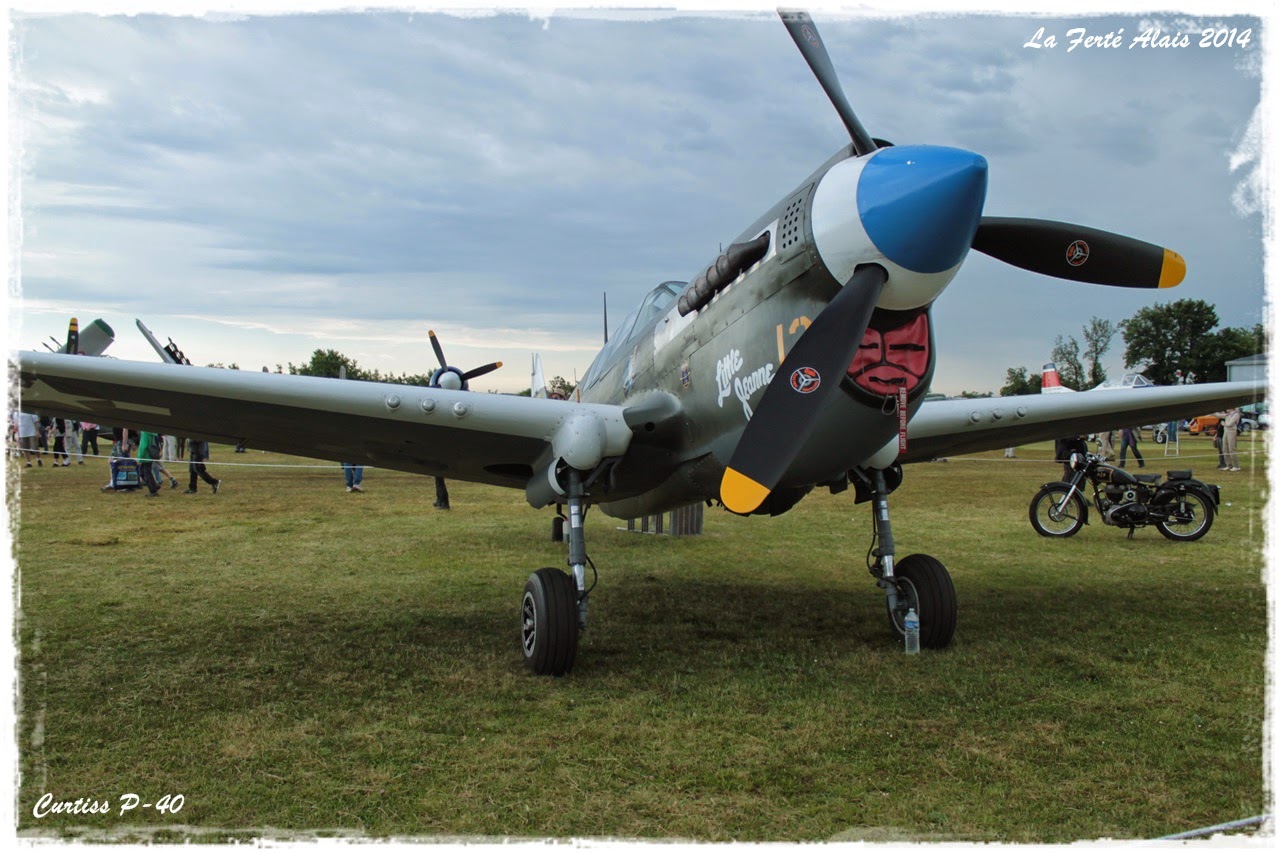


Dernière édition par Obelix le Jeu 06 Aoû 2015, 3:33 pm, édité 1 fois

Obelix- Livreur de Menhir

- Messages : 2711
Date d'inscription : 07/11/2012
Age : 59
Localisation : un ch'tit village, près d'une forêt, et entouré de forts romains
 Re: Curtiss P-40E : Doc et infos
Re: Curtiss P-40E : Doc et infos
Filanciu a écrit:je me suis pris de passion un jour pour cette appareil quand un createur a mis en ligne une campagne sur IL 2 1946 ( le vrai ) qui mettait en situation les" flying tigers" du" general chennault "
desole mais je me souviens plus du nom de cette personne (l age surement )
a l epoque les createurs livraient les missions ou campagnes completes ( doc histo , skins etc .....) un regal
Vois pas non plus...
Depuis j'ai accumulé des dizaines de photos sur ces piafs, j'ai même un tableau Excel afin de recensser les n° de série, et les n° individuels, les particularités de cammo, insigne perso etc...
Sans parler de deux Biographies de pilotes de l'AVG (in english of course), et de tas de livres sur le sujet...

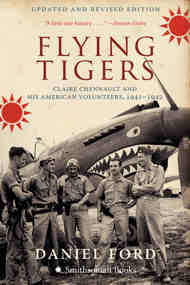
Ah, la Birmanie, les éléphants blancs, les rizières, les moustiques, le riz à tous les repas, la deng, la malaria, la dysentrie.... [GROS SOUPIR]

UN LIEN POUR LES NOSTALGIQUES

Obelix- Livreur de Menhir

- Messages : 2711
Date d'inscription : 07/11/2012
Age : 59
Localisation : un ch'tit village, près d'une forêt, et entouré de forts romains
 Re: Curtiss P-40E : Doc et infos
Re: Curtiss P-40E : Doc et infos
Czech Texan peut-être?

http://www.mission4today.com/index.php?name=Downloads3&file=details&id=635

http://www.mission4today.com/index.php?name=Downloads3&file=details&id=635
Invité- Invité

Obelix- Livreur de Menhir

- Messages : 2711
Date d'inscription : 07/11/2012
Age : 59
Localisation : un ch'tit village, près d'une forêt, et entouré de forts romains
 Re: Curtiss P-40E : Doc et infos
Re: Curtiss P-40E : Doc et infos
1938 date de creation des AVG pas si vieux que ca :D

Filanciu- Kombrig

- Messages : 366
Date d'inscription : 12/01/2013
 Re: Curtiss P-40E : Doc et infos
Re: Curtiss P-40E : Doc et infos
Et de la doc. il y en a ici : une vraie annexe de la bibliothèque du congrès ! Impressionné je suis !Obelix a écrit:J'ai lu toute la doc mise en ligne (manuels de vol), et j'ai hâte de mettre mon auguste postérieur dans la barquette du P-40
Et aussi impatient d'en tenir le manche C'était mon avion américain préféré dans War Thnuder en "simu". J'aimais bien partir avec des bombes et finir en chasseurs de Stuka !
Deux questions aux experts le P 40 Warhawk correspond-t-il au dernier développement de la série ?
J'en ai vu un à Compiègne : la vidéo n'est pas terrible mais reste un excellent souvenir
Et dans le manuel p12 ils disent de réduire la PA PUIS les RPM pour diminuer la puissance et l'inverse pour l'augmenter. Est-ce valable pour tous les avions ?
Invité- Invité
 Re: Curtiss P-40E : Doc et infos
Re: Curtiss P-40E : Doc et infos
C'est effectivement ce que j'ai vu recommandé pour d'autres avions aussi Bex.
Invité- Invité
 Re: Curtiss P-40E : Doc et infos
Re: Curtiss P-40E : Doc et infos
LoupVert a écrit:C'est effectivement ce que j'ai vu recommandé pour d'autres avions aussi Bex.
Bon comme quoi il faut toujurs lire les modes d'emploi !
Merci !
Invité- Invité
 Re: Curtiss P-40E : Doc et infos
Re: Curtiss P-40E : Doc et infos
Warhawk c'est le nom donné par l'USAAF aux P40 à partir de la version F, sachant que tous les chasseurs Curtiss se nomment "Hawk" chez le constructeur.

Obelix- Livreur de Menhir

- Messages : 2711
Date d'inscription : 07/11/2012
Age : 59
Localisation : un ch'tit village, près d'une forêt, et entouré de forts romains
 Re: Curtiss P-40E : Doc et infos
Re: Curtiss P-40E : Doc et infos
Doc concernant le Curtiss P-40:
Concernant les Curtiss de l'AVG (je l'ai, il est très bien)

Plus générique semble-t-il


Concernant les lend lease, attention on parle de tous les chasseurs en lend lease en URSS (je l'ai)

Pour les Tomahawk's brit (je l'ai)

Pour les versions "Pacifique" (je l'ai)

Pour les version MTO (je l'ai)

Pour les version CBI

L'après AVG (je l'ai parfois redondant avec le volume consacré aux Flying Tigers)

Les collections Osprey forment une bonne base de documentation (parfois aussi la seule dispo), mais très souvent le sujet n'est que survolé et nécessite un deuxième ou troisième ouvrage pour complément d'info.
Concernant les Curtiss de l'AVG (je l'ai, il est très bien)

Plus générique semble-t-il


Concernant les lend lease, attention on parle de tous les chasseurs en lend lease en URSS (je l'ai)

Pour les Tomahawk's brit (je l'ai)

Pour les versions "Pacifique" (je l'ai)

Pour les version MTO (je l'ai)

Pour les version CBI

L'après AVG (je l'ai parfois redondant avec le volume consacré aux Flying Tigers)

Les collections Osprey forment une bonne base de documentation (parfois aussi la seule dispo), mais très souvent le sujet n'est que survolé et nécessite un deuxième ou troisième ouvrage pour complément d'info.
Dernière édition par Obelix le Jeu 13 Aoû 2015, 11:31 am, édité 1 fois

Obelix- Livreur de Menhir

- Messages : 2711
Date d'inscription : 07/11/2012
Age : 59
Localisation : un ch'tit village, près d'une forêt, et entouré de forts romains
 Re: Curtiss P-40E : Doc et infos
Re: Curtiss P-40E : Doc et infos
Sur un format de 92 pages et 18 profils, ce livre explore la carrière des Warhawk sur tous les fronts (Kagero)
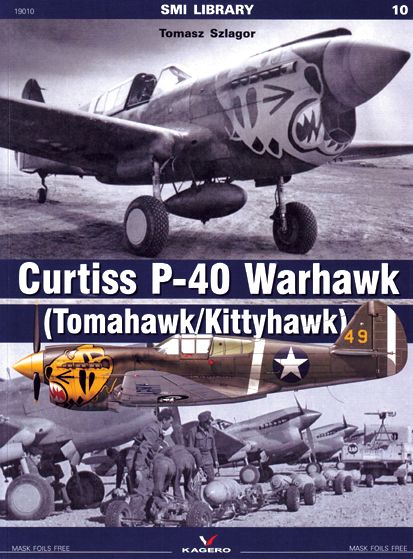
Il existe chez AJ plusieurs ouvrages où l'on rencontre du P40, deux volumes consacrés aux P40 et ce dernier. Idem chez kagero publishing
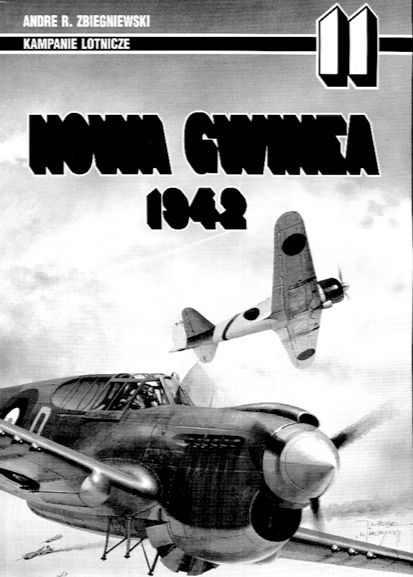

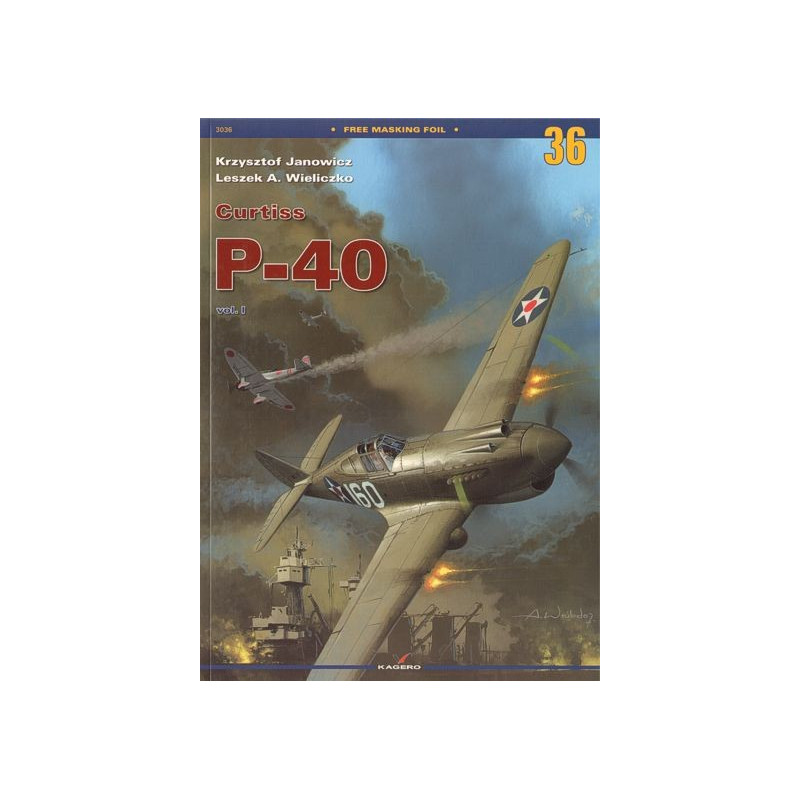
Je ne présente pas la série Squadron Signal (monographie, walk around etc...), livret synthétique, quelques profil, des gros plans, un historique, une doc de base excellente. Cette collection est très ancienne (plus de 40 ans pour certains numéros), mais reste de bon qualité (je les ai)
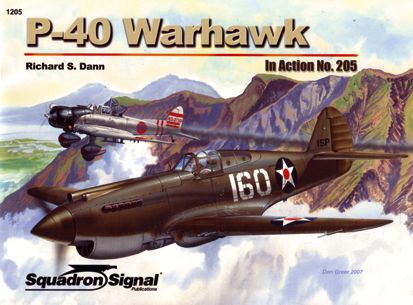
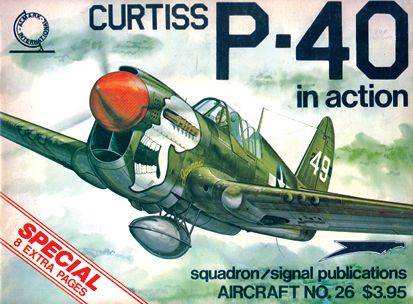
C'est du Squadron signal mais en plus technique, je l'ai et c'est magnifique! A noter les editions "warbird tech" qui nous fournissent des ouvrages très techniques, très bien fait aussi
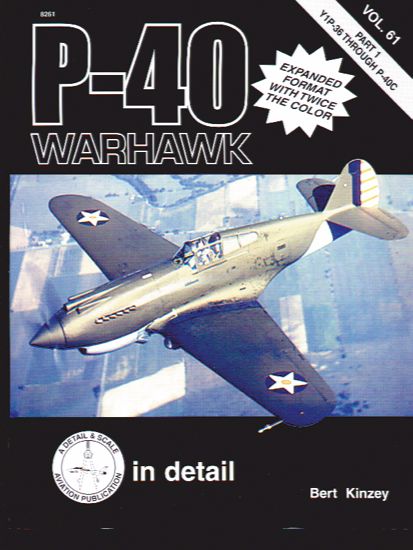
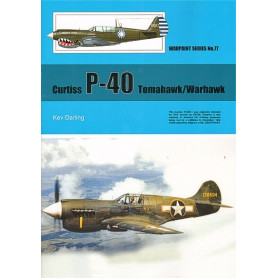
Encore un avatar de squadron signal, mais consacré aux unités, cet ouvrage est très sympa, toujours un parti pris de maquettistes.
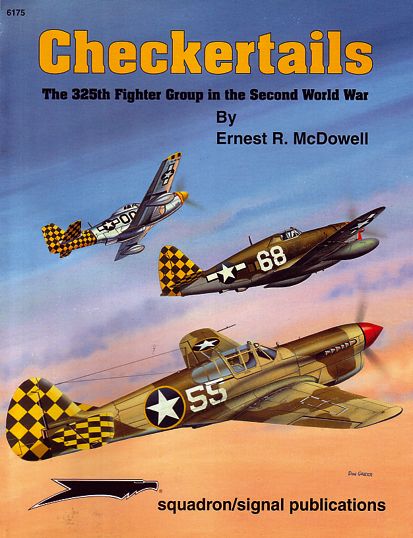
Si le polonais ne vous rebute pas, il y a deux volumes consacrés aux P40
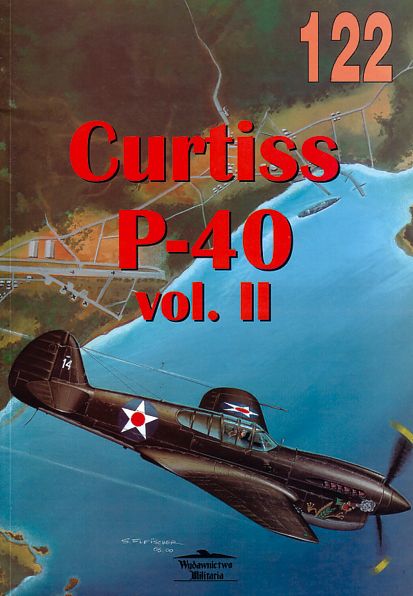
Petit livret en français qui reprend tous les types de P40, avec profils. Très sympa, une bonne base

Ma bible perso, magnifique!!!
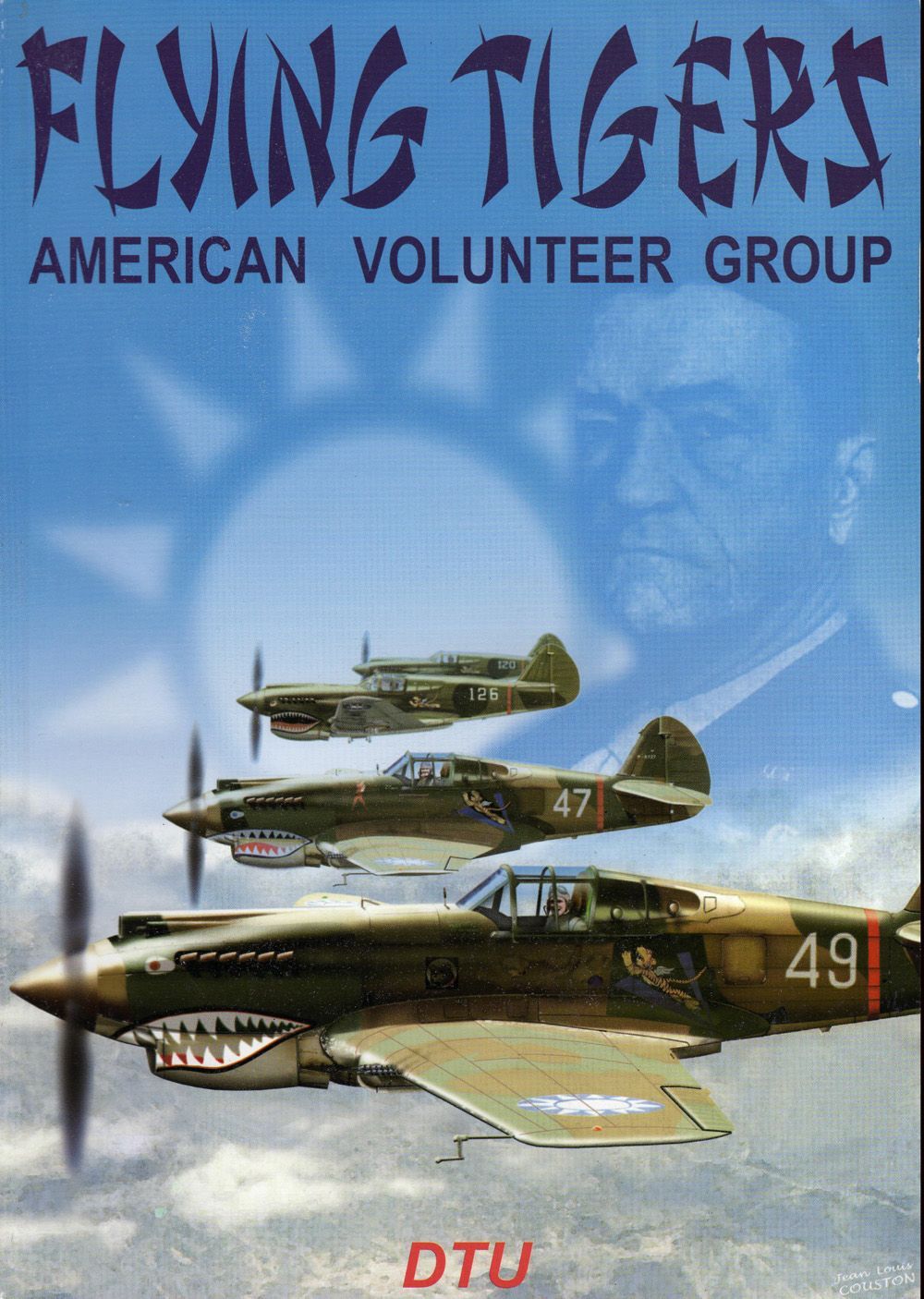
Et ma super bible, des tas de photos inédites, bouquin acheté d'occaz et pas trop cher, le must du must
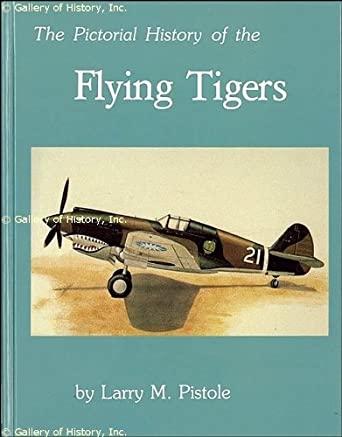
Et ce ne sont là que quelques exemples de doc pour ce piaf.
Bonne lecture.

Il existe chez AJ plusieurs ouvrages où l'on rencontre du P40, deux volumes consacrés aux P40 et ce dernier. Idem chez kagero publishing



Je ne présente pas la série Squadron Signal (monographie, walk around etc...), livret synthétique, quelques profil, des gros plans, un historique, une doc de base excellente. Cette collection est très ancienne (plus de 40 ans pour certains numéros), mais reste de bon qualité (je les ai)


C'est du Squadron signal mais en plus technique, je l'ai et c'est magnifique! A noter les editions "warbird tech" qui nous fournissent des ouvrages très techniques, très bien fait aussi


Encore un avatar de squadron signal, mais consacré aux unités, cet ouvrage est très sympa, toujours un parti pris de maquettistes.

Si le polonais ne vous rebute pas, il y a deux volumes consacrés aux P40

Petit livret en français qui reprend tous les types de P40, avec profils. Très sympa, une bonne base

Ma bible perso, magnifique!!!

Et ma super bible, des tas de photos inédites, bouquin acheté d'occaz et pas trop cher, le must du must

Et ce ne sont là que quelques exemples de doc pour ce piaf.
Bonne lecture.

Obelix- Livreur de Menhir

- Messages : 2711
Date d'inscription : 07/11/2012
Age : 59
Localisation : un ch'tit village, près d'une forêt, et entouré de forts romains
 Re: Curtiss P-40E : Doc et infos
Re: Curtiss P-40E : Doc et infos
"Quelques" ? Me semble très complète cette bibliographie !
A noter les editions "warbird tech" qui nous fournissent des ouvrages très techniques, très bien fait aussi
Est-ce qu'il y a des détails techniques genre pour le décollage mettre x Pa X RPM mélange à y % ou technique pur et dur genre la jambe de train gauche est en Dural 10% ?
Merci en tout cas pour la revue !
A noter les editions "warbird tech" qui nous fournissent des ouvrages très techniques, très bien fait aussi
Est-ce qu'il y a des détails techniques genre pour le décollage mettre x Pa X RPM mélange à y % ou technique pur et dur genre la jambe de train gauche est en Dural 10% ?
Merci en tout cas pour la revue !
Invité- Invité
 Re: Curtiss P-40E : Doc et infos
Re: Curtiss P-40E : Doc et infos

Y'a pas de pourcentage pour le mélange du P-40, mais quatre positions uniquement.
les livrets techniques détaillent les éléments "techniques", matériels si tu préfères, de l'avions, structure, moteur, circuit hydraulique, etc...

Obelix- Livreur de Menhir

- Messages : 2711
Date d'inscription : 07/11/2012
Age : 59
Localisation : un ch'tit village, près d'une forêt, et entouré de forts romains
 Re: Curtiss P-40E : Doc et infos
Re: Curtiss P-40E : Doc et infos
ok merci !
Si tu te poses en pleine nature tu es capable de réparer ton zinc quoi !
Si tu te poses en pleine nature tu es capable de réparer ton zinc quoi !
Invité- Invité
 Re: Curtiss P-40E : Doc et infos
Re: Curtiss P-40E : Doc et infos
Bon c'est devenu le fourre tout du P40, du coup, je fais l'impasse. Si on pouvait avoir un sujet qui ne parle que de la version que l'on va avoir en jeu, avec les régimes moteurs, l'armement, et des points à surveiller (la citation de sources serait un gros plus, car ça peut avoir son importance, de même si plusieurs sources se recoupent), ça m'arrangerait, car je n'ai pas le temps de me fader toutes les docs.
Obélix, le osprey sur les P40 sovietiques, il vaut le coup, même s'il parle de tous les modèles, ou ça reste succins ?
Obélix, le osprey sur les P40 sovietiques, il vaut le coup, même s'il parle de tous les modèles, ou ça reste succins ?

Phoenix- Kombrig

- Messages : 2266
Date d'inscription : 02/07/2013
Localisation : Bordeaux
Page 1 sur 5 • 1, 2, 3, 4, 5 
 Sujets similaires
Sujets similaires» A20B Doc et infos
» Curtiss P40E
» Polikarpov I-16 type 24 : Doc et Infos
» MC 202 serie VIII: doc et infos
» ME 262a Doc et infos
» Curtiss P40E
» Polikarpov I-16 type 24 : Doc et Infos
» MC 202 serie VIII: doc et infos
» ME 262a Doc et infos
Cercle de Combat Gaulois :: Simulation aérienne :: Cercle de Combat Gaulois - BOS :: Info Fiches Avions
Page 1 sur 5
Permission de ce forum:
Vous ne pouvez pas répondre aux sujets dans ce forum